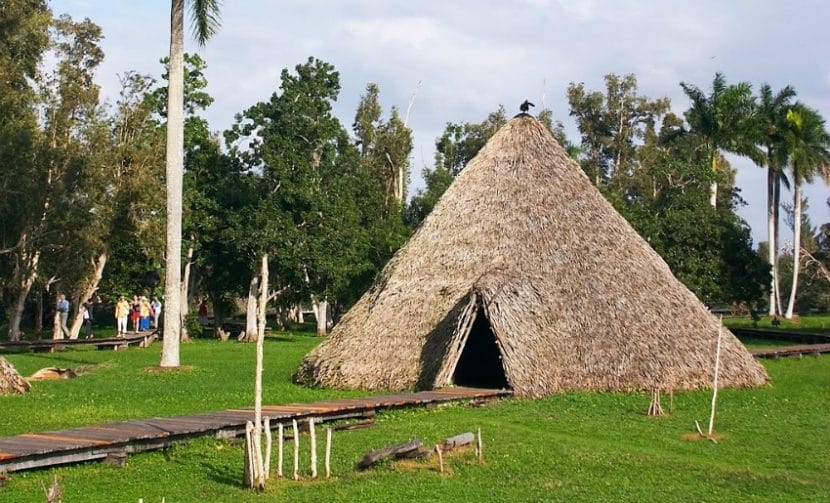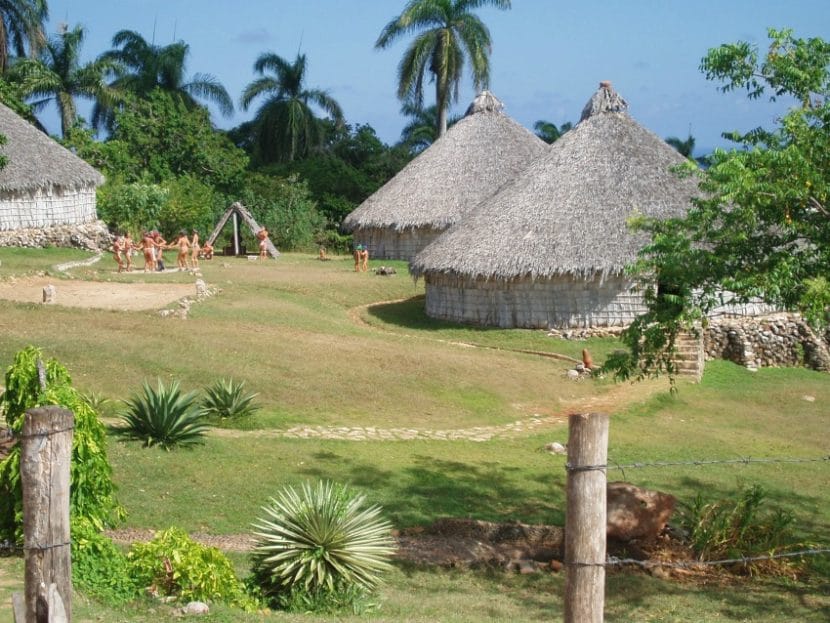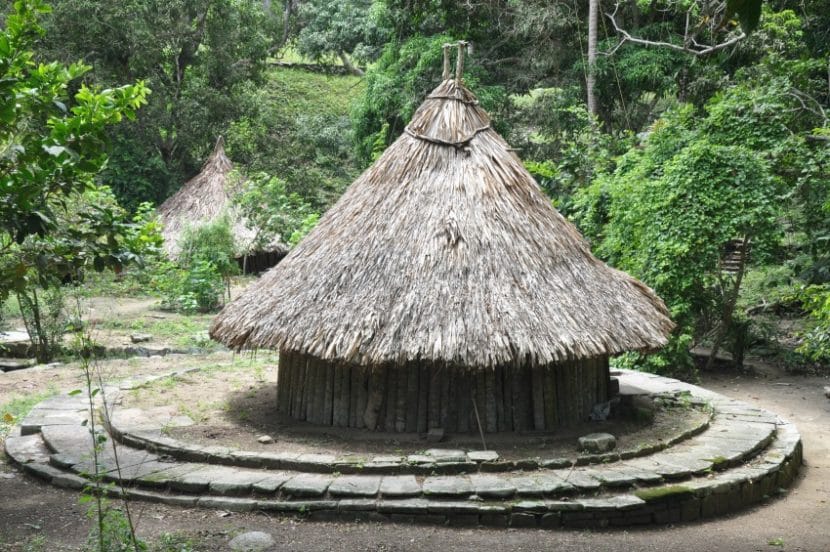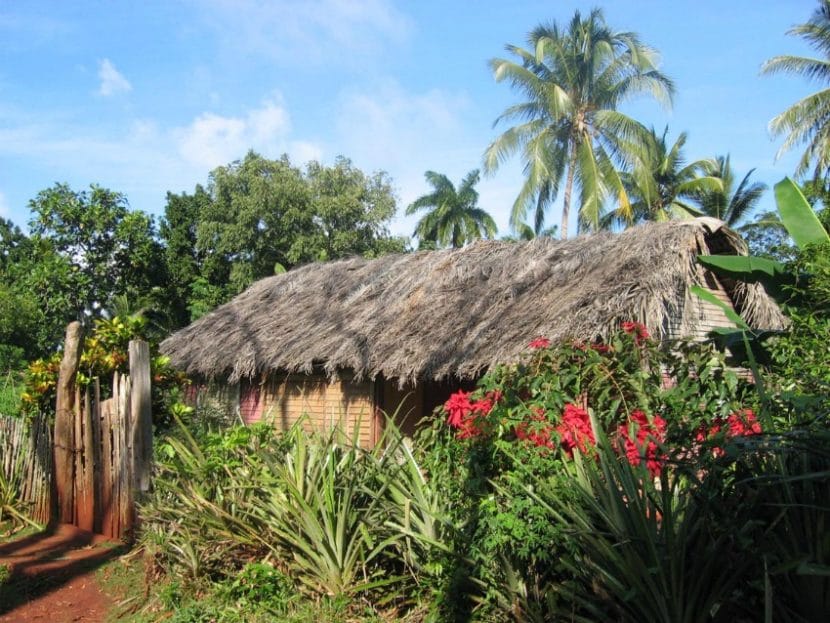
When we think of Cuba they come to mind Varadero, the famous Malecón of Havana or its streets dotted with vintage cars, but rarely do we delve into that even purer culture that invades some of the corners of the largest island in the Caribbean.
One of the best examples resides in the constructions known as bohíos, the name given to the typical Taino house in Cuba erected during pre-Columbian times. Do we take shelter under roofs of mud and palm trees? And if possible, on a cotton hammock?
Cuba: the Taino housing culture

Before the arrival of Christopher Columbus to Cuba and other Caribbean islands in 1492, the island of habanos and mojitos had already been discovered by the so-called Taínos, men who came from South America through the mouth of the Orinoco River, more than 4.500 years ago. The Tainos not only reached islands such as the Bahamas, but also spread to the Greater Antilles, to which Cuba belongs, and the Lesser Antilles.
After their arrival, the Tainos discovered that the fauna and flora of Cuba was very different from that of the Amazon rainforest: there were up to sixty different species of palm trees, coffee plantations and the jungle foliage was replaced by beaches, mountains, hills and plains. that completely configured the possibilities of settlement in this new place.
In this way, the newcomers began to erect their homes thanks to new materials, resulting in the typical hut of Taino Cuba known as a bohío. Simple huts made with materials such as wood and leaves specially extracted from the royal palm tree. The Taínos established their dwellings on a rounded plan, erected with very strong log posts and beams so that the structure could withstand the capricious winds of the Caribbean. In turn, the reeds and palm leaves were used to raise the walls, the elements of which were tied with vines.
Despite having no windows, the huts had good ventilation since the natural materials used were fresh and allowed better perspiration. The roof of the house was built with interwoven yaguas and mud, to prevent water leaks in times of rain. Regarding the interior, the huts had poles from which hammocks woven with cotton hung. Of course, the largest dwelling belonged to the chief (or chief) of the tribe.

The huts served as a place to sleep, take a nap or convalesce during an illness, since the Taínos spent much of their time outdoors. Inside the hut there were hardly any objects or other items except a four-legged wooden seat also known as a dujo, vessels or containers, some religious objects and weapons.
Despite the fact that in the beginning the huts were rather round and with a conical roof, they also happened to have a rectangular shape supported under a gabled roof, inspiring a colonial architecture deployed during the five hundred years after the arrival of Christopher Columbus in 1492.
In fact, the hut would be used during colonial times to keep Caribbean slaves in check, who in turn began to live not only with slaves brought from Africa, but also with Chinese coolies. It was about taking advantage of the constructions they found, since both the vegetation and the materials were very different from those in Europe.
The rectangular hut would in turn inspire the creation of the famous barracks, a highly successful construction in slave-owning Brazil but which in Cuba was limited to being a storage point for coffee landowners. Nor were there so many barracks, since their construction, based on masonry and more expensive materials, did not fit into the budgets of some foremen and landowners, so the hut became a good alternative to retain slaves, especially a Taíno who they would continue to coexist in some corners of the Cuban island until the end of the XNUMXth century.
Visit a Taino home in Cuba

If you travel to Cuba, discover its cultural charms beyond the typical highlights tourist is a must, being Los bohíos a good example of that ethnic, ancestral and naturist Cuba that still survives in some corners of the island.
Currently, the part of Cuba with the highest concentration of huts corresponds to the eastern part of the island, especially in Baracoa, a location that served as a link between Cuba and Hispaniola (Haiti and the Dominican Republic) during the pre-Columbian and colonial periods.
In this place people still talk about Taíno warrior Hatuey, known as the First Rebelde del Caribe and the huts appear next to the palm groves, being a prototype of housing recovered in recent years thanks to its low cost and its perfect adaptation to a humid island attacked by cyclones and tropical rains. Huts that have not forgotten the essence of old times and whose perfect camouflage with the tropics makes them places perhaps not so easy to spot at first.
Otherwise, you can always be guided by that cloud of smoke that gives away the owner of a hut cooking the first coffee in the morning.